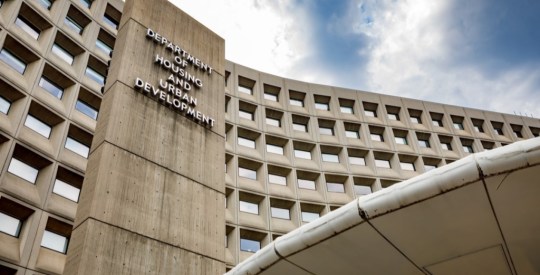The Office of Thrift Supervision is weighing a proposal that would allow lenders to refinance underwater borrowers into a government-insured loan without immediately forgiving principal, creating a so-called “negative equity certificate” to cover the difference between the original loan amount and current property values.
The idea is that OTS-regulated lenders would establish a nominal certificate representing the negative equity from the original mortgage when refinancing a borrower into a government-insured mortgage — and that this certificate would then be used to create a tradeable market for underwater debt, rather than having the lender write-off principal completely and immediately.
The plan would separate a troubled mortgage into two parts. The first would cover the current fair-market value of the home and would be refinanced by the Federal Housing Administration. The remainder would be issued to the original lender as a certificate.
If the borrower eventually sells the home, the FHA mortgage would be paid off first. Remaining cash would be applied to paying off the value of that certificate. Anything left over would go to the borrower.
If there’s not enough profit to pay off the certificate, the original lender would take a loss, which makes this proposal a gamble. However, the plan anticipates that there would be a market where these certificates are traded. That means the lenders could sell them immediately to offset some of the loss or hold them with the hope that they will appreciate, said Jaret Seiberg, an analyst at Stanford Policy Research.
“It’s an effort to prevent foreclosures while minimizing the hit lenders might take, without socking it to the taxpayer,” said Richard Bitner, a former subprime lending executive and author of the book Greed, Fraud and Ignorance. “Compared to freezing rates, it’s an improvement.”
Bitner, however, doesn’t see the proposal having much impact because participation would likely be voluntary, he said.
The proposal is still in its early stages, and hasn’t been vetted by policymakers or banking regulators, but OTS spokeperson Kevin Petrasic told the press Wednesday that the idea is an attempt to find a solution that doesn’t use taxpayer dollars and represents a better alternative to foreclosure.
Questions, however, remain about the proposal’s effect on the secondary market. Sources that spoke with HW wondered how such “tradable IOUs” would impact original investors, given that creating a tertiary market for “negative equity certificates” would likely still entail RMBS investors taking a bath on the original loan.
“I’m concerned here about how something like this gets applied,” said another source, who asked not to be identified. “Are we talking about any borrower that’s upside down getting this sort of program?” If so, the source said, losses may actually be greater than if such a program didn’t exist. Economist Nouriel Roubini suggested yesterday that 10 to 15 million borrowers may soon owe more on their mortgage than the current value of their home.
“Not all underwater borrowers are financially-strapped,” she said. “There would have to be some mechanism for limiting who this could be applied to before I could see investors even considering the idea.”



